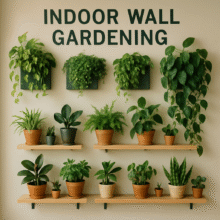Fall Seeds To Plant
Fall Seeds to Plant: Your Complete Autumn Gardening Guide
Fall is one of the most rewarding seasons for gardening, offering cooler temperatures, fewer pests, and the perfect conditions for establishing plants that will thrive through winter and into spring. Here’s your comprehensive guide to successful fall seed planting.
Why Plant in Fall?
Cooler Weather Benefits: Fall’s mild temperatures create ideal growing conditions with less stress on seedlings compared to the heat of summer.
Natural Moisture: Autumn typically brings more consistent rainfall and higher humidity, reducing watering needs.
Fewer Pests: Many garden pests are less active as temperatures drop, giving your plants a better chance to establish.
Extended Growing Season: Fall planting extends your harvest period and prepares for early spring crops.
What to Plant in Fall
Cool-Season Vegetables
These hardy vegetables actually prefer cooler temperatures and can withstand light frosts:
- Beets (Detroit Dark Red) – Sweet, earthy roots perfect for fall harvest
- Carrots – Develop exceptional sweetness in cool weather
- Radishes – Quick-growing and crisp in autumn conditions
- Lettuce (‘Buttercrunch’ or romaine types) – Thrives in cool weather without bolting
- Broccoli – Produces sweet, tender heads in fall
- Cabbage – Excellent for winter storage
- Cauliflower – Develops better flavor in cool weather
- Peas – Plant for early spring harvest
- Turnips – Both roots and greens are delicious
- Onions – Plant for next year’s harvest
- Leafy greens – Kale, chard, and other hardy greens
Fast-Growing Crops
Perfect for quick harvests before winter:
- Bush beans – Can mature before first frost in mild climates
- Summer squash – Plant early fall for late harvest
- Cucumbers – In mild climates, before frost arrives
Flowers for Next Spring
Plant these now for beautiful spring blooms:
- Black-eyed Susan – Cheerful perennial wildflower
- Larkspur – Tall spikes of blue, pink, or white flowers
- Columbine – Delicate, unique flower shapes
- Poppies – Bright, papery blooms
- Snapdragon – Colorful vertical interest
- Purple coneflower – Native perennial favorite
- Perennial sunflower – Long-lasting golden blooms
Essential Fall Sowing Tips
Timing is Everything
- Plan ahead: Time fall seedlings to allow crops to mature before harsh frosts
- Count backwards: Usually 8-12 weeks before your region’s first expected frost
- Know your zone: Match planting dates to your local climate and frost schedule
Cold Climate Considerations
- Post-frost planting: In areas with cold winters, sow wildflowers or perennials after a killing frost
- Seed dormancy: This prevents seeds from sprouting too early and getting damaged by winter weather
- Cold stratification: Many perennial and wildflower seeds require this cold period to germinate properly
- Spring emergence: Seeds will naturally sprout when conditions are right in spring
Soil Preparation
- Garden bed prep: Prepare beds just as you would for spring sowing
- Moisture management: Ensure good soil moisture and drainage
- Weed control: Clear beds of weeds before planting to reduce competition
Vegetables Commonly Grown from Fall-Sown Seeds
The following vegetables are particularly well-suited for fall planting:
Root Vegetables: Beets, carrots, radishes, turnips – these develop better flavor and sweetness in cool weather
Brassicas: Broccoli, cabbage, cauliflower, kale – these cool-season crops actually prefer fall conditions
Leafy Greens: Lettuce, spinach, arugula, Asian greens – perfect for continuous fall and winter harvests
Legumes: Peas and fava beans – can be planted in fall for early spring harvest
Alliums: Onions, garlic, shallots – plant now for next year’s harvest
Important Limitations to Consider
Climate Matching: Variety selection and planting dates must be carefully matched to your local climate, frost schedule, and hardiness zone.
Indoor Starting: Some specific seeds may need to be started indoors or require particular timing to avoid frost damage.
Variety Selection: Choose varieties known for quick maturity and cold tolerance when planting late in the season.
Keys to Success
Consult Local Resources: Always check local planting calendars and seed packet instructions for the most accurate timing in your area.
Choose Appropriate Varieties: Select varieties specifically noted for quick maturity and cold tolerance.
Monitor Weather: Keep an eye on frost forecasts and be prepared to protect tender plants if needed.
Soil Temperature: Ensure soil temperature is appropriate for seed germination – some seeds won’t germinate in cold soil.
Fall gardening opens up a whole new world of growing possibilities. With proper planning and timing, you can enjoy fresh harvests well into winter and beautiful flowers come spring. The key is understanding your local climate and choosing the right varieties for your growing season.




